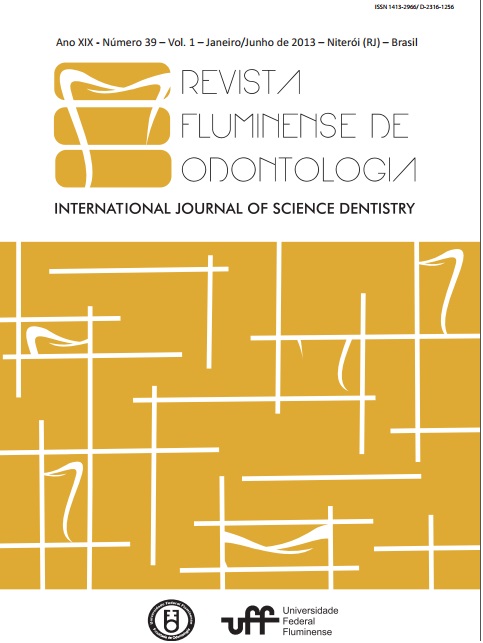Evaluation of the formation of marginal gaps in preheated composite resin restorations
DOI :
https://doi.org/10.22409/ijosd.v1i39.210Résumé
Composite resins are polymeric restorative materials that have acceptable mechanical properties, so they are used in anterior and posterior teeth. There is, however, polymerization shrinkage inherent in the polymeric materials. This contraction is responsible for the formation of cracks at the interface of the restoration. These gaps contribute to the staining of the composite resin and the appearance of cavities. In order to minimize the effects of polymerization shrinkage, variations in restorative technique has been introduced to fulfill this goal. The preheating resin composite is one of them.This study aimed to assess the formation of marginal gaps, using scan electron microscopy, in composite resin restorations created using one room-temperature composite resin and one preheated to 60°C. 20 recently-extracted human molars with circular cavities in the surface dentine of each proximal surface were used. The cavities were restored using Filtek Z350 (3M) composite resin affixed with Adper Scotchbond Multipurpose Adhesive (3M) and divided into two groups of 10 samples: group 1 – room-temperature composite resin restorations (n=10) and group 2 – composite resin restorations preheated to 60oC (n=10). The samples were kept in a bacteriological incubator for a period of seven days. After this, the restorations were polished and epoxy resin replicas were created using a casting with addition silicone for subsequent SEM analysis. The gaps were measured with the aid of UTHSCSA Image tool software and the results were submitted to Student “t” test statistical analysis, achieving the following results: the highest marginal gap figures were obtained with Filtek Z350 resin preheated to 60oC (t= -3.961 and p=0.000). Based on the methodology employed and the results achieved, it can be concluded that there was a greater formation of marginal gaps in the dentin-composite resin interface where Filtek Z350 resin preheated to 60°C was used for restorations, thus making it preferable to use room-temperature composite resin.
Keywords:Composite resin. Marginal gaps. Electronic microscopy.


